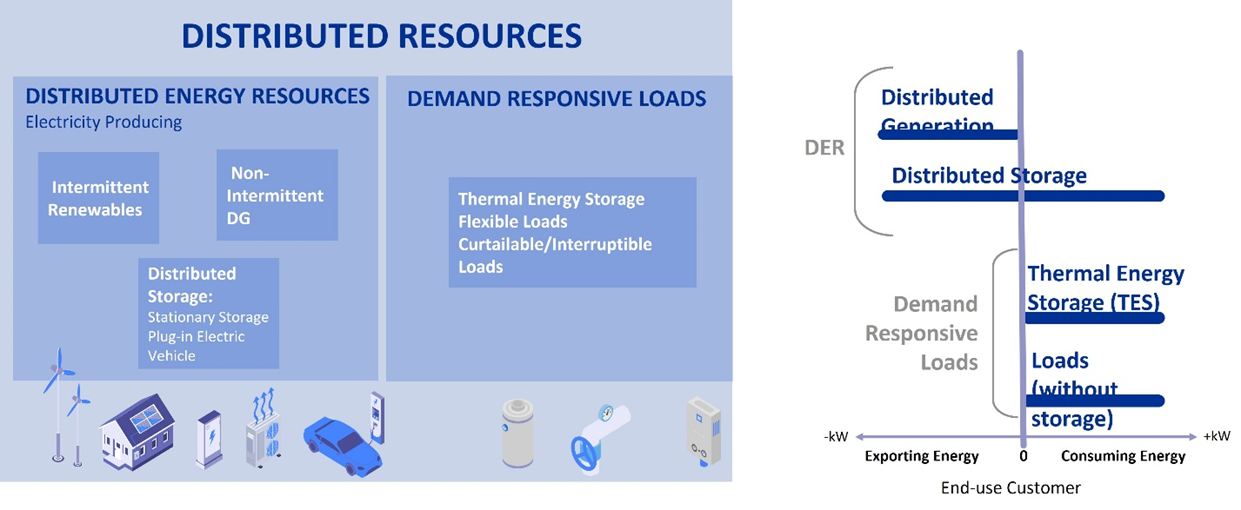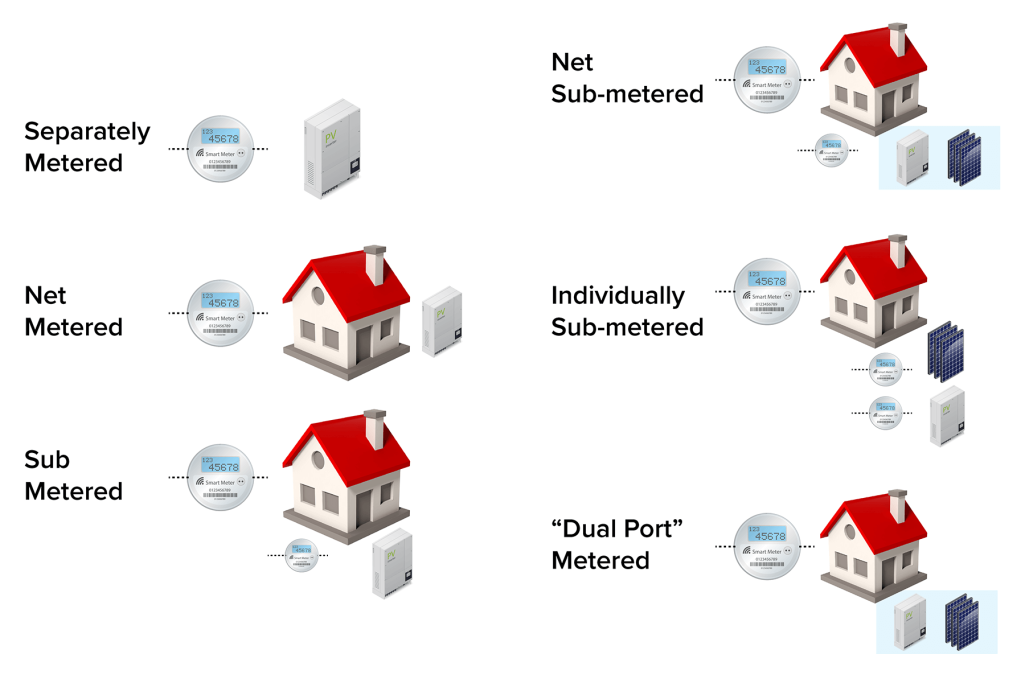The workstream provided an extended outlook on Distributed Resource (both DER and DR assets) technology penetration in the U.S. The workstream also clarified issues related to retail and wholesale program participation, and discussed ways to avoid double counting from dual program participation.
The first task in the workstream included review of current DER/DR programs as well as the anticipated growth of different DER/DR assets, such as solar PV, energy storage, air conditioners, and plug-in EV. This provided useful context for identifying types of opportunities and the scale available to DER/DR aggregations in wholesale markets, electric delivery systems, and/or retail programs.

Different types of Distributed Resources (left) and distinguishing characteristics (right)
The outlook on Distributed Resources reveals substantial penetration and rapid growth in technology adoption. The second Task investigated the possibility of double counting from dual program participation— a situation wherein a registered DER/DR resource can simultaneously participate in multiple programs (e.g., one retail and one wholesale DR program, respectively ). The workstream gathered perspectives of various stakeholder types on what constituted double counting and what combinations of dual program participation were deemed acceptable or not acceptable, in order to clarify viable opportunities as well as challenges for DER/DR aggregations. Generally, dual participation is allowed as long as system reliability is not compromised, and double counting is avoided. Double counting refers to rewarding a resource more than once for providing essentially the same service through dual program participation (e.g., retail bill credits and wholesale payments for the same amount of energy reduction during a DR event). To address the issue of double counting, various metering alternatives were identified and methods for avoiding double counting discussed.

Opportunities for Distributed Resources exist across the electricity value chain

Different metering alternatives were compared for handling dual participation issues.
Key Takeaways
- Different types of Distributed Resources are expected to grow substantially over the coming years.
- Reconstitution of load is one way to avoid double counting sub-metered DER.
- Adoption of dual-port or multi-port metering can provide measurements that identify grid-supplied versus DER-supplied power for a calculable quantity of customer facility load, without DER consumption included, thus helping avoid double counting.
- Retail billing structure can be better aligned with wholesale cost drivers towards improved affordability of electric service.
- Making transparent the demand component of electric service (e.g., demand-based service subscriptions) for mass market customers can help enable impactful customers by aligning retail demand response with system reliability needs.
- Through thoughtful program design, the electric power industry can collectively advance programs to enable impactful customers that are economically incentivized to adjust load and help capture avoided costs.